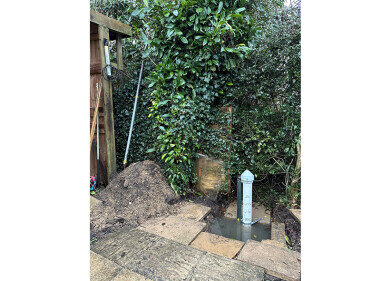Water/Wastewater
Agilent Technologies and University of Arizona to Improve Methods for Detecting Emerging Contaminants in Water Supplies
Oct 03 2011
Agilent Technologies (USA) announces an agreement with Dr. Shane Snyder – an internationally recognised authority on water contamination from the University of Arizona’s Department of Chemical and Environmental Engineering – and the university’s BIO5 Institute to work together to develop ways to detect emerging contaminants in water. Emerging contaminants can include pharmaceuticals, personal care products and other substances used in everyday life.
The collaboration is expected to increase the ability of scientists to accurately detect contamination in water supplies in order to protect the environment and public health.
“The partnership with Agilent allows the University of Arizona to more effectively influence water reuse and desalination strategies by ensuring that the required water quality has been achieved for its intended use,” said Dr. Snyder. “Not only will we investigate known potential threats to water quality, we will also bridge the gap between detection and health by developing methodologies that can screen water for toxicity from multiple compounds.”
The concept of addressing contaminants in potable water as mixtures (as opposed to separate chemicals) is of great interest to the regulatory, scientific and public communities.
“This collaboration will allow us to share applications developed by Dr. Snyder’s group in the area of water use and reuse with other researchers,” said Joe Weitzel, global environmental manager, Agilent. “Agilent is committed to driving research that will ultimately benefit environmental and public health, and there is no better partner to achieve this goal than Dr. Shane Snyder.”
The collaboration with Agilent provides the university and BIO5 with unique analytical capabilities. Using Agilent equipment, nearly any imaginable trace organic or inorganic contaminant can be detected and analysed, allowing for an ultra-comprehensive analysis of water, including the development of chemical signatures unique to a particular water source. This capability, added to the already renowned water research facilities at the university, will help bridge engineering and public health to improve water usage and quality.
The collaboration will be centered at the BIO5 Institute on the University of Arizona campus, where the infrastructure for cross-cutting work combining biological and chemical research already exists.
Digital Edition
IET 34.2 March 2024
April 2024
Gas Detection - Biogas batch fermentation system for laboratory use with automatic gas analysis in real time Water/Wastewater - Upcycling sensors for sustainable nature management - Prist...
View all digital editions
Events
May 05 2024 Seville, Spain
May 06 2024 Minneapolis, MN, USA
May 13 2024 Munich, Germany
May 15 2024 Lund, Sweden
May 15 2024 Frankurt-am-Main, Germany


















